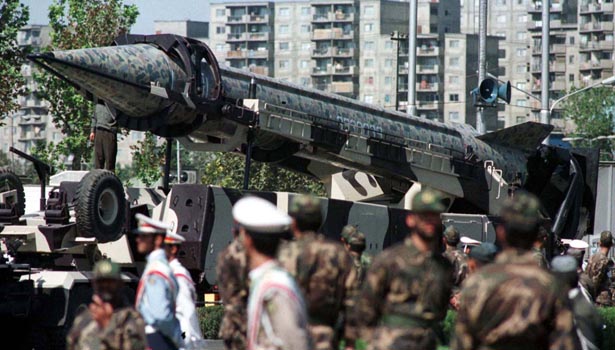Whatever their current disagreements on the reasonableness of further sanctions, Washington and Jerusalem have now both indicated that they may be willing to use military options against Iran. After all, sanctions have apparently not convinced Tehran to abandon their nuclear efforts, and rejecting the military option altogether could leave Israel vulnerable. At the same time, what would have to be a stunningly complex and operationally unprecedented preemption, and at this conspicuously late date, could easily result in catastrophic failure.
Assuming that nothing else works, then foregoing a defensive first-strike would mean that Israel would have to live with the protracted uncertainty of a potentially nuclear Iran. Unless Iran’s leadership remains consistently rational, thus valuing its own national survival above all else, then Israeli nuclear deterrence would be only more or less effective. With this likely in mind, Israel has been expanding and upgrading its network of active defenses.
An improved Israeli interceptor called “Block 4” contains new software designed to intercept Iran’s Shahab and Sajil missiles. Israel is also correctly concerned about Iran’s newest version of the Conqueror rocket. The centerpiece of Israel’s active defense plan for Iran remains the Arrow anti-ballistic missile program, which was recently tested successfully. Iron Dome, a complementary system, is intended primarily for intercepting shorter-range rocket attacks. Still under development is David’s Sling, which would be intended for use against medium-range rockets and cruise missiles. Still, no system of ballistic missile defense could ever be so reliable as to preclude a corollary strategy of deterrence, especially if the incoming warheads were biological or nuclear.
The best approach for Israel may be to move, visibly and verifiably, to strengthen its nuclear deterrence posture, which right now is deliberately ambiguous. To dissuade a rational adversary from launching an attack, Israel would have to convince them that its second-strike forces were sufficiently invulnerable to survive any considered first-strike. This means developing, testing, and implementing an interception capability that will match an enemy threat. This also means enhancing the credibility of its still-ambiguous nuclear deterrent. If Iran gets too close to a nuclear bomb, Israel may have to prepare, very promptly, to take its long-unannounced nuclear weapons public and to demonstrate that these weapons — some of which may be sea-based — would survive, and respond to, any initial nuclear strike.
Looking back, it’s clear that Iran should never have been allowed to proceed this far with its illegal military nuclearization. Now, of course, Israel will have to deal with a uniquely hostile enemy regime by instituting steady enhancements of both its nuclear deterrence and active defense capabilities. Although the desirability of regime-change in Tehran might at first appear self-evident, it is at least worth considering that a successor regime in Tehran could prove worse for Jerusalem, and also for Washington. Compared to jihadists, President Mahmoud Ahmadinejad may not yet represent the nadir of Iranian leadership prospects.
Of course, many analysts have pointed out that Iran could also potentially deliver a nuclear weapon to Israel through a terrorist proxy, for example Hezbollah in Lebanon. Israel might have to face a heightened prospect of nuclear terrorism. This represents adanger to American cities as well.
Still, all other things being equal, leaders in Israel and the United States may well decide against a preemptive strike on Iran as more costly than gainful. Fortunately, deterrence, even of an enemy state that might sometime not value its physical survival above all else, could still work.
Even if Iran should sometimes be less than wholly invested in its self-preservation, it might still have a consistent and “transitive” hierarchy of preferences. In this case, it’s likely that, at the very top of this hierarchy, would be the overriding and immutable religious expectations of Shiite Islam, the religion of most Iranians, including its president and supreme leader. If properly “encouraged” by Israel and the United States, leaders in Iran could reasonably calculate that the all-important theological benefits of long-term peace with Israel actually exceed the expected benefits of any war. After all, any Iranian leadership, rational or irrational, would always value as utterly indispensable the safety of the country’s principal religious figures, sites, and institutions, for example the holy site of Qom.
Finally, it is also possible, perhaps even most probable, that Iranian leaders would turn out to behave rationally, valuing their country’s physical survival more highly than anything else. Here, Iran would remain subject to the very same “normal” threats of retaliatory destruction as other rational states in world politics. In other words, deterrence could work. While there can never be any absolute assurances of this, it would still be premature to conclude that a nuclear Iran, whether rational or irrational, would inevitably use those weapons against Israel or the U.S.
This article was originally published on August 2012 in The Atlantic.
John T. Chain is the former commander in chief of U.S. Strategic Air Command and the former director of the Joint Strategic Target Planning Staff.


























